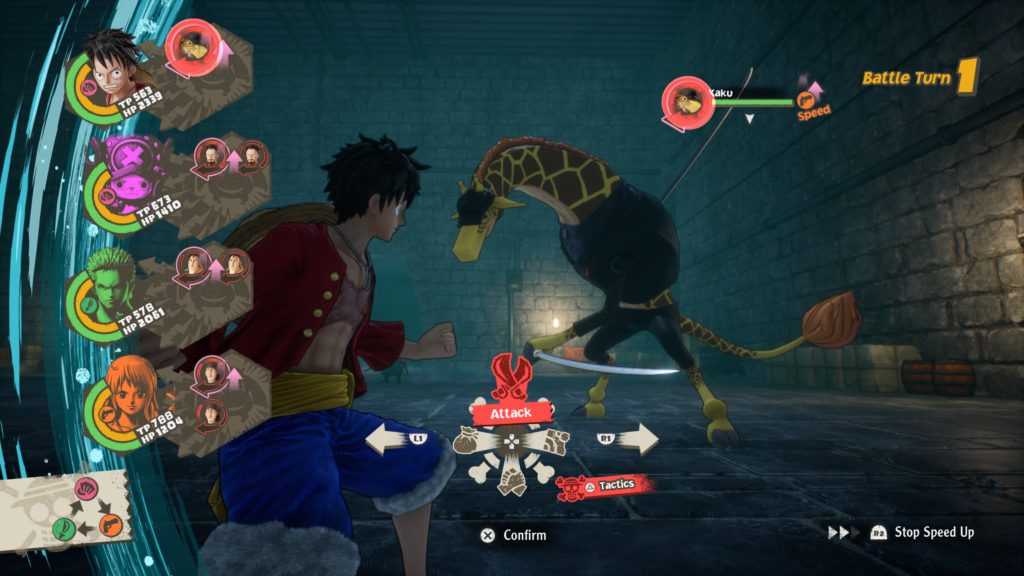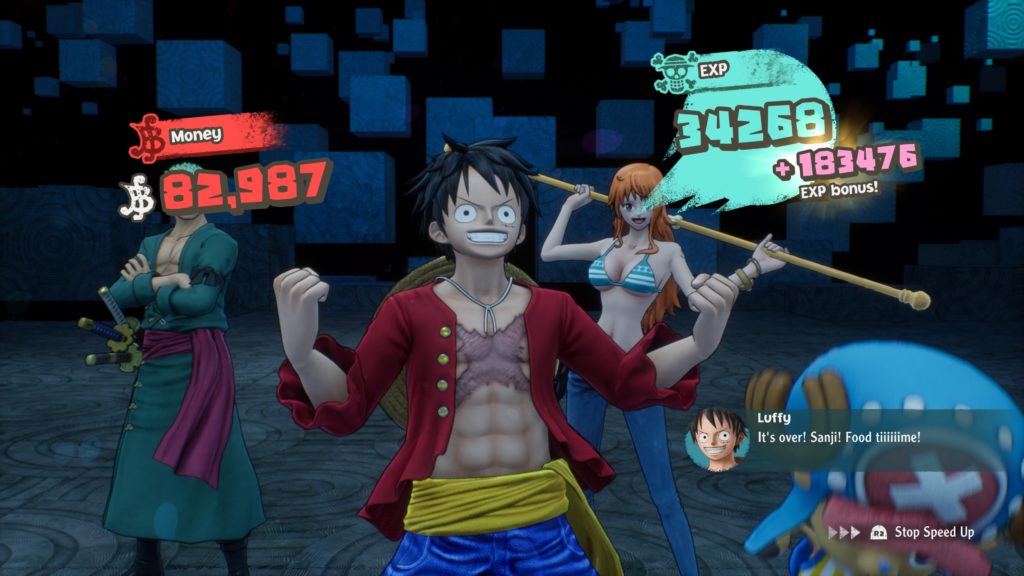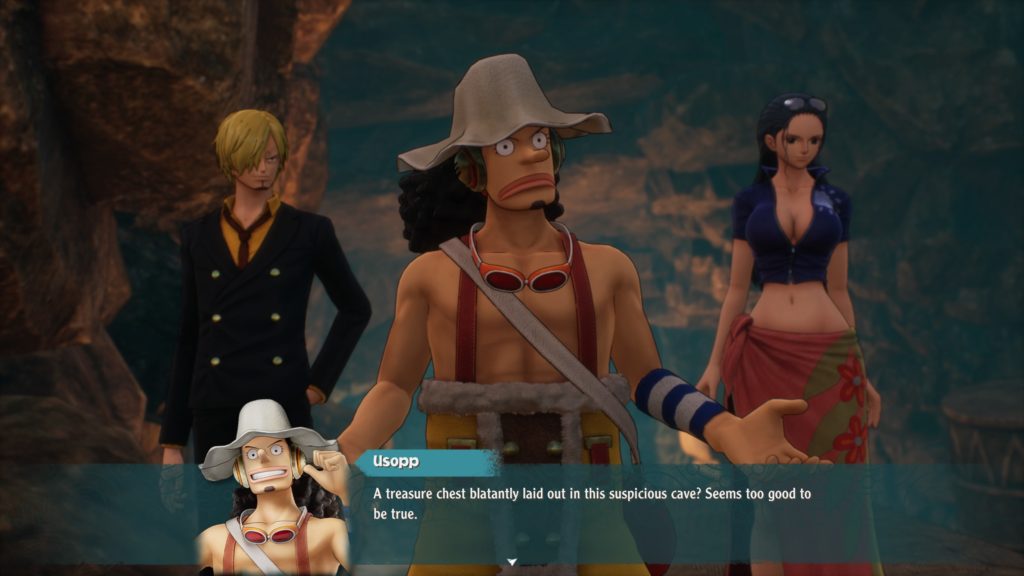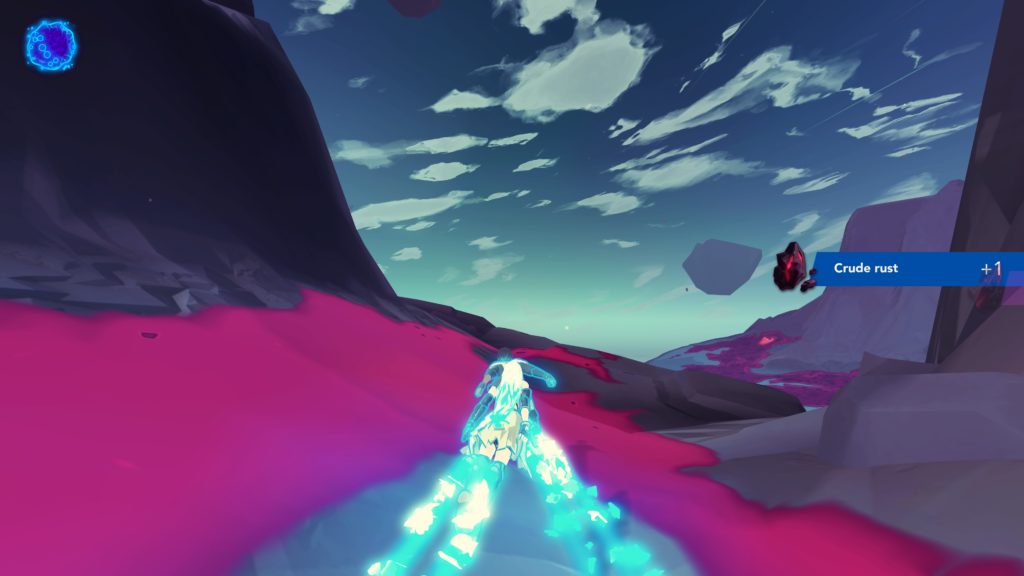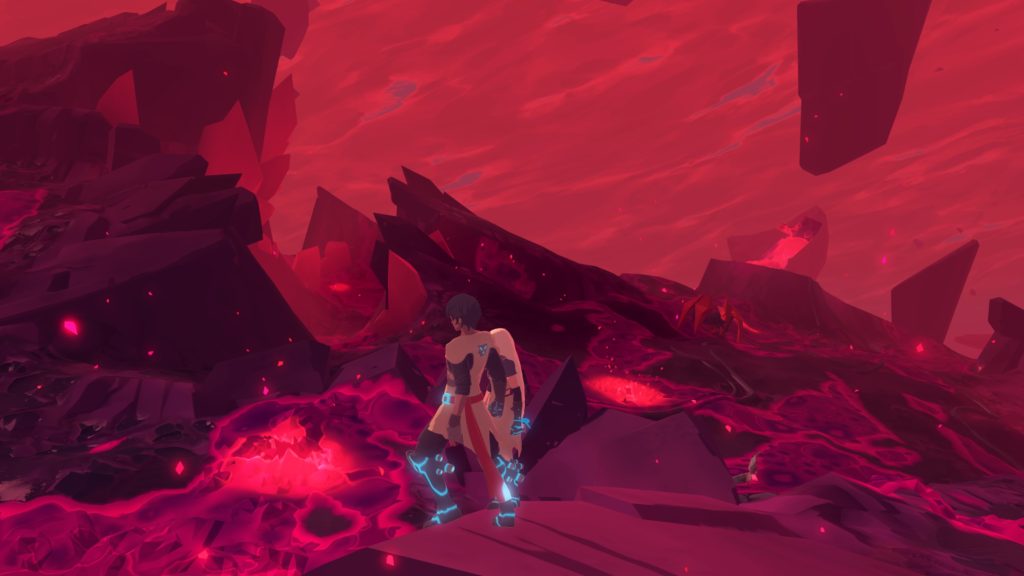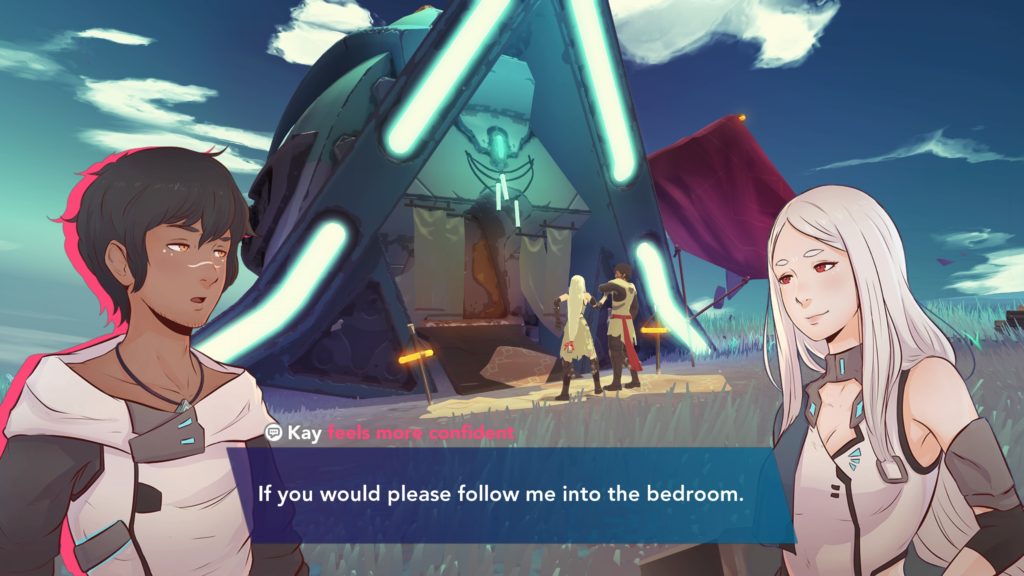- Genre: Action
- Platform: PS5
- Also Available On: PS4, Xbox One, Xbox Series, Windows
I get that this is an incredibly early ramblings for me. At the point that I’m writing this I’m not even halfway through the game. Normally at this point I’d be shelving a game and yelling about it or continuing on. However, I think I’ve already hit on what is sticking in my mind about playing this game – I totally love the core loop here, and it often feels better than any game in the series, but it feels like they stopped halfway modernizing the moment to moment gameplay, and it feels like a missed opportunity.
The actual core mech movement feels INCREDIBLY better than it did in past titles, and a lot of that is down to modern hardware allowing them to do more graceful and faster moving combat overall. It’s incredibly easy to pick up the game and be dashing around dodging stuff. Movement is incredibly fast and the mechs feel incredibly nimble to a point that it feels kind of weird for the series. However, in terms of it trending toward a modern action focus, I don’t think it’s particularly unwelcome.
The weapon buildout is as good as it’s ever been, and I’ve been enjoying the process of building out a mech tailored toward the particular mission. It’s pretty clear after getting your face punched in whether or not a boss is more tailored towards a safer ranged approach or an aggressive melee approach, and getting used to the different types after years away from the series has been the best part of being back in it. Each type has obvious strengths and weaknesses with different approaches, and being effective at them is simply fun.
However, where I think things sort of fall apart is a little bit in the balance of what I’ve played so far combined with a camera that just feels ancient.
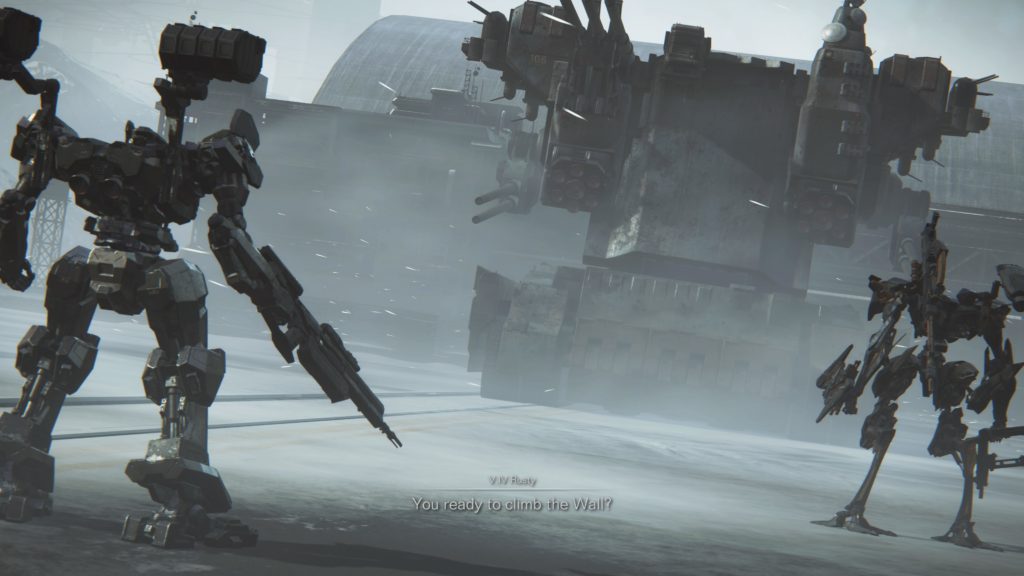
In saying balance, I don’t actually mean difficulty. Yes, the game is often hard but it doesn’t often feel completely unfair. Where I say balance it’s that overall it feels like the game is leaning incredibly far into combat being twitch focused – see a warning of an incoming attack and immediately dodge – with huge penalties towards missing those dodges. What this ends up doing is creating this wide range where I either have no problem at all with a mission or feel like I’m slamming my head against a luck barrier based on whether or not the incoming attack pace is fast or not, and that often comes down to whether or not I can actually see what is incoming.
In terms of the camera itself, it’s a pretty standard 1P/3P dual-stick camera. It’s got a bit of user options in terms of camera speed, but it’s pretty barebones. The weapons themselves use the core camera aim with a bit of an angle to allow for soft targeting assists and make aiming a little bit less precise. There’s a lock on R3, but this is my biggest gripe. The lock is not a traditional hard lock in so much as it doesn’t really pull your camera, and it is incredibly easy to lose the lock target if they get anywhere near the edge of your view. Frustratingly, some weapons are also just better if you don’t have a camera lock because they will aim more effectively without a fixed target. It all feels like penalties to playing on a gamepad, which is weird given the series past on the PlayStation family.
The strange thing about the game is that it feels like it wouldn’t actually be that hard playing on keyboard/mouse where I had more ability to rapidly change my viewpoint. Where I’m kind of struggling on console is in actually achieving both defense and offense in equal measure. I’m finding that I can concentrate well on audio cues and really have no problem staying alive for extended periods of time, but then I’m fighting the camera to even find my target, let alone have consistent lock ons. Even at max camera speed, I’m finding that by the time I rotate towards my target on sub-boss/boss combat, they are already dodging past me again, causing me to need to heavily rotate my camera again. This has been somewhat alleviated by the quick turn upgrade, but that ultimately feels like a bad patch to the problem.
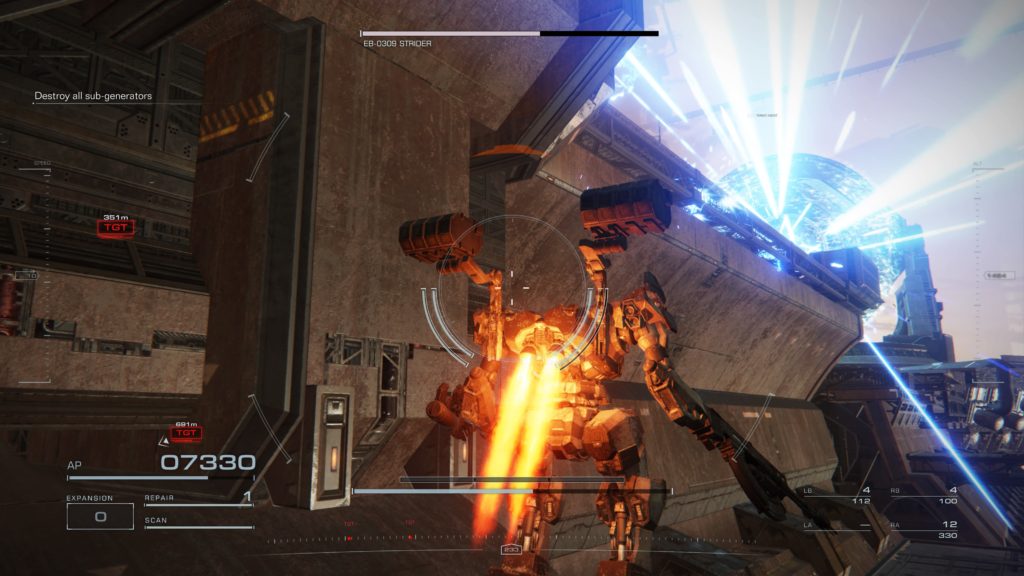
I think there’s sort of two things in my mind that are solutions here if the current pace of the game is where they want to take the series – less reliance on aiming to achieve offense, or really leaning into the fast-paced combat and making dodging the core focus. For me, I’d like to see the second one, despite the fact that it feels like it would pull the series even further away from what it used to be.
If I look at two early bosses that I didn’t necessarily find hard but found frustrating – the Juggernaut and the Sulla portion of the Watchpoint mission – the thing I found frustrating wasn’t that they were hard, but that they dodged out of view. This more often than not resulted in me having to pan my camera, figure out where they ended up, and plod my ass over there. In the first example you’re getting back onto a camera stick, removing your ability to rapidly dodge. The Juggernaut was also pretty clearly setup as a boss that required dodging to get behind the enemy and quickly do burst damage with melee, which was made difficult by the fact that I was spending most of the boss’ vulnerable time just trying to adjust my view. Even with quick turn on the second one, the process of quick turning feels pretty clunky to pull off (hold sprint button and move in that direction). If I then compare it to what’s supposed to be a harder boss (Balteus at the end of Chapter 1), that boss didn’t feel frustrating because I had a much better ability to track the enemy through the attack patterns and spent my time simply getting better at recognizing what the boss was doing.
I think what I’d much rather see at this point is a distinct hard camera lock option where the game then leans into dodge as a core mechanic, allowing the player to remove the whole stick <-> button transition and lean into smart avoidance of incoming attacks. In the two noted examples, it would allow me to spend less time adjusting my camera and more time fundamentally attacking, which opens up opportunities for there to be more difficult attack patterns. Under the current attack setup for those bosses, I think they would be fundamentally easy with a hard lock in place, so their perceived difficulty to me feels like an artificial setup caused by a camera that does not feel in sync with the rest of the gameplay.
The problem of important things being on both the sticks and face buttons is something that I think a lot of modern games are running into, and unfortunately I don’t have a good solution at this point other than tailoring the experience around using only one of them at all times. Having camera panning being a core feature and dodging be a core need means that the player needs quick access to both simultaneously, and moving from sticks to face buttons is always going to be clunky. The unfortunate thing is that because they have four possible attacks, the other control schemes that are offered just create different problems. Type B puts dodge and jump on the shoulder triggers which is great, but puts shoulder weapons on the face buttons which is not great if you need to also aim. Type C swaps shoulder and hand weapon slots from Type B. Custom mappings on standard pads don’t solve the problem because of the same thing – you only have so many shoulder buttons. Ultimately there’s just too many things for not enough buttons and there’s bad compromises in any selection. The best solution here unfortunately is a pro style controller that moves bindable face buttons to back triggers so you never have to leave the stick.
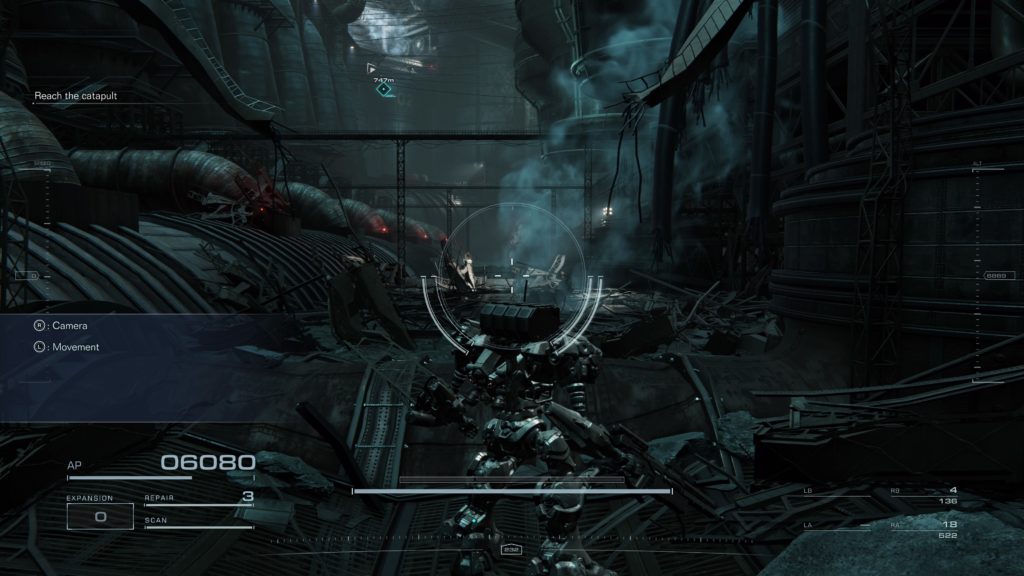
I guess in a lot of ways what I’m getting at here is the same problem I have with the Souls games. They have extremely good fundamental core gameplay that didn’t always click to me because of one or two very specific things. In the case of Souls, it was always the large periods of time where I couldn’t readjust what the character was doing because of an existing action – for example, being able to better dodge cancel a long attack. Armored Core in general has always been a series that was closer to my heart in terms of core gameplay anyway. In the case of AC6, it feels like they’ve tried to modernize things but haven’t really settled in a place where it quite nails it, so rather than feeling like a better version of past AC games or a reimagining of the core game, it feels stuck a bit in the middle. I’m ultimately enjoying it but spending a lot of time thinking about what it could be instead.


